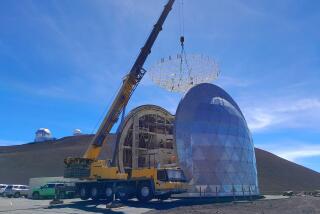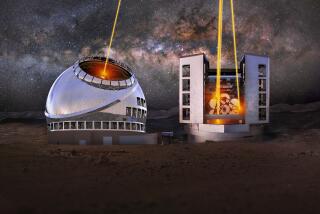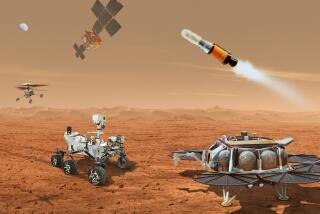Hubble’s Star Quality
NASA Administrator Sean O’Keefe’s surprise Jan. 16 decision to shutter the Hubble Space Telescope was, as astronomer Tom Brown aptly put it, “like shooting a prize-winning thoroughbred when it’s about to win the triple crown.”
The Greyhound-bus-sized telescope, after all, has scientifically outperformed any other NASA project. In recent years, it has helped scientists determine the precise age of the universe (13.7 billion years), discover planets outside our solar system and confirm the existence of black holes.
That’s why the Senate, which will hold its first hearing on next year’s NASA budget Wednesday, should question how O’Keefe arrived at his dubious decision to cancel a 2006 shuttle mission to install new gyroscopes that would have extended the life of scientists’ pride and joy from 2006 to at least 2012.
O’Keefe made the decision without any public review or discussion, and some of his deputies, including Anne Kinney, director of physics and astronomy, and Ed Weiler, associate administrator for space science, have said they thought NASA should have been able to find the money to support the vital 2006 mission. O’Keefe said he had to cut back on something, in part to meet President Bush’s goal of sending humans to Mars around 2030. But Bush’s Mars mission is a highly speculative project; few believe it will take place because Bush hasn’t even begun suggesting how to pay for it.
This editorial page has opposed the continuation of the space shuttle because it has proved dangerous to its human cargo; the shuttle’s components are wearing out and are costly to maintain -- and the scientific results from the shuttle missions themselves are of dubious value.
But there is one thing that scientists agree the shuttle does well: Maintain the Hubble telescope. Much as an automobile must be serviced by a mechanic -- a regular tuneup, adjusting a part here, replacing a part there -- the Hubble was designed to be taken care of by the shuttle. Now that the Bush administration and Congress are apparently determined to launch the shuttle once again, we can only recommend that future shuttle missions be used to help the Hubble do its job.
As NASA’s own chief scientist, veteran astronaut and astrophysicist John Mace Grunsfeld, recently put it, Hubble is “the most significant and productive scientific instrument ever crafted by humans. The mission of NASA can be described as one of exploration, discovery and inspiration. It is in part to enable great scientific discoveries in the exploration of the universe that as astronauts we are willing to risk our lives.”
If Washington is determined to continue the shuttle, the Hubble provides the only strong scientific reason to do so.






